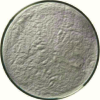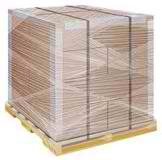SDS of Dihydroxyaluminium sodium carbonate or Dihydroxyaluminum sodium carbonate USP Grade DASC Manufacturers
CAS Number: 539-68-4 or 16482-55-6
Dihydroxyaluminium sodium carbonate or Dihydroxyaluminum sodium carbonate DASC Manufacturers.
Dihydroxyaluminum Sodium Carbonate or Dihydroxyaluminium Sodium Carbonate SDS, Safety Data Sheet
MSDS, Material Safety Data Sheet 01-Sept-22
1. Product Identification
Product Name & Other Names: Dihydroxyaluminum Sodium Carbonate or Dihydroxyaluminium Sodium Carbonate or Sodium (carbonato)dihydroxyaluminate.
CAS No.: 539-68-4 or 16482-55-6
EINECS EC Code: 234-567-2 or 240-536-4
Molecular Weight: 143.99
Chemical Formula: NaAl(OH)2CO3
Relevant uses and uses advised against (if any): Industrial use.
Suppliers: As per letterhead.
2. Hazards Identification
GHS, Globally Harmonized System Classification in accordance with 29 CFR 1910
Hazard Class and Category Code(s), Regulation (EC) No 1272/2008 (CLP)
Not a hazardous substance or mixture according to Regulation (EC) No. 1272/2008.
This substance is not classified as dangerous according to Directive 67/548/EEC.
Labeling Regulation as per GHS & EC 1272/2008 (CLP) & GHS
GHS Label Elements NONE |
Signal Words: None
Hazards not otherwise classified (HNOC):
May causes mild skin irritation.
May causes mild eye irritation.
Precautionary statements:
P261: Avoid breathing dust/fume/gas/mist/vapors/spray.
P262: Do not get in eyes, on skin, or on clothing.
P281: Use personal protective equipment as required.
P302+P352: IF ON SKIN: Wash with plenty of soap and water.
P304+P340: IF INHALED: Remove victim to fresh air and keep at rest in a position comfortable for breathing.
P305+P351+P338: IF IN EYES: Rinse cautiously with water for several minutes. Remove contact lenses, if present and easy to do. Continue rinsing.
P337+313: If eye irritation persists get medical advice/attention.
3. Composition/Information on Ingredients
Product Name & Other Names: Dihydroxyaluminum Sodium Carbonate or Dihydroxyaluminium Sodium Carbonate or Sodium (carbonato)dihydroxyaluminate.
CAS No.: 539-68-4 or 16482-55-6
EINECS EC Code: 234-567-2 or 240-536-4
4. First Aid Measures
Always seek medical advice after the first aid treatment.
Inhalation: If inhaled, remove to fresh air. If not breathing, give artificial respiration. If breathing is difficult, give oxygen. Get medical attention.
Ingestion: Contact medical center quickly. Never give anything by mouth to an unconscious person. Get medical attention.
Skin Contact: Immediately flush skin with plenty of water for at least 15 minutes. Remove contaminated clothing and shoes. Get medical attention. Wash clothing before reuse. Thoroughly clean shoes before reuse.
Eye Contact: Check for and remove any contact lenses. Immediately flush eyes with running water for at least 15 minutes, keeping eyelids open. Cold water may be used. Get medical attention.
5. Fire Fighting Measures
Auto ignition temperature: NA
Combustible. High heat or direct flame is necessary to cause ignition. Toxic fumes Aluminum & Sodium oxides and carbon monoxide may be formed in fire.
Fire Extinguishing Media: Dry chemical, foam, or carbon dioxide. Do not use a solid stream of water since the stream will scatter and spread the fire. Water spray may be used to keep fire exposed containers cool.
Special Information: In the event of a fire, wear full protective clothing and NIOSH-approved self-contained breathing apparatus with full face piece operated in the pressure demand or other positive pressure mode.
6. Accidental Release Measures
Personal precautions, protective equipment, and emergency procedures: Ventilate area of leak or spill. Avoid breathing dust/fumes/gas/mist/vapors/spray. Use individual protective equipment (waterproof boots, suitable protective clothing, safety glasses, etc.). Restrict unprotected personnel from the area. Prevent any contact with hot surfaces. Do not approach facing the wind. Do not touch the spilled material.
Environmental precautions: Do not let the product enter drains, soil, or water sources.
Methods and materials used for containment Cleanup procedures and Storage: Keep away from heat. Keep away from sources of ignition. Provide ventilation. Contain spilled material. Cover with an inert, non-combustible absorbent material, (e.g. sand, earth, diatomaceous earth, vermiculite). Vacuum or sweep-up and remove to an approved disposal container.
7. Handling and Storage
Precautions for safe handling: Apply according to good manufacturing and industrial hygiene practices. Ensure proper ventilation. In case of insufficient ventilation, wear suitable respiratory equipment. Wash thoroughly after handling. Do not drink, eat, or smoke while handling. Avoid contact with skin, eyes, and clothing. Minimize dust generation. Avoid breathing dust/fumes/gas/mist/vapors/spray.Keep container tightly closed. Avoid ingestion and inhalation. Use individual protective equipment (waterproof boots, suitable protective clothing, safety glasses, etc.).
Conditions for safe storage, including any incompatibilities: Store in cool, dry, and ventilated area away from heat sources and protected from sunlight in tightly closed original container. Keep air contact to a minimum. Store protected from heat, sparks and ignition sources and incompatible materials. Avoid contact with skin and eyes. Avoid inhalation of dust/mist/vapor. Do not store with incompatible materials like strong oxidizing agents and acids. Store in light resistant containers. Prevent any electrostatic discharge.
8. Exposure Controls/Personal Protection
Airborne Exposure Limits: Not available. Consult local authorities for acceptable exposure limits.
Ventilation System: A system of local and/or general exhaust is recommended to keep employee exposures as low as possible. Local exhaust ventilation is generally preferred because it can control the emissions of the contaminant at its source, preventing dispersion of it into the general work area.
Personal Respirators (NIOSH Approved): For conditions of use where exposure to the substance is apparent and engineering controls are not feasible, consult an industrial hygienist. For emergencies, or instances where the exposure levels are not known, use a full-face piece positive-pressure, air-supplied respirator.
Skin Protection: Wear impervious protective clothing, including boots, gloves, lab coat, apron or coveralls, as appropriate, to prevent skin contact.
Eye Protection: Use chemical safety goggles and/or a full face shield where splashing is possible. Maintain eye wash fountain and quick-drench facilities in work area.
Other Control Measures: Maintain good housekeeping in work area. Handle in accordance with good industrial hygiene and safety practice. Wash hands after handling.
9. Physical and Chemical Properties
Appearance: Solid Crystals or Powder.
Odor: odorless.
Odor threshold: Not available.
pH: Not available.
Relative density: Not available.
Melting point/freezing point: Not available.
Initial boiling point and boiling range: Not available.
Flash point: Not available.
Auto-ignition temperature: Not available.
Decomposition temperature: Not available.
Upper/lower flammability or explosive limits: Not available.
Vapor pressure: Not available.
Vapor density: Not available.
Evaporation rate: Not available.
Flammability (solid, gas): Not available.
Partition coefficient: n-octanol/water: Not available.
Solubility: Insoluble in cold water
Viscosity: Not available.
10. Stability and Reactivity
Stability: It is stable under ordinary conditions of use and storage.
Hazardous Decomposition Products: Carbon dioxide, carbon monoxide, sodium oxide, aluminum oxide and toxic fumes may form when heated to decomposition.
Hazardous Polymerization: Not reported. However, it can explode under certain conditions.
Incompatibilities: Acids, oxidizing agents, heat, and sparks.
Conditions to Avoid: Heat, flames, ignition sources and incompatibles.
11. Toxicological Information
Oral rat LD50: Not available
Mutagenic effects: NA.
Teratogenicity: No information available.
Reproductive Effects: No information available.
Carcinogenicity: Not listed as a carcinogen by OSHA and NTP.
12. Ecological Information
Environmental Toxicity: No information available.
The product and the products of its degradation are not known to be toxic.
Persistence and Degradability: No information available.
Mobility: No information available.
Bioaccumulation/ Accumulation: No information available.
Results of PBT and vPvB assessment: No data available for assessment.
13. Disposal Considerations
Whatever cannot be saved for recovery or recycling should be managed in an appropriate and approved waste disposal facility. Processing use or contamination of this product may change the waste management options. State and local disposal regulations may differ from federal disposal regulations.
14. Transport Information
DOT USA & ADR/RID Europe: Not dangerous goods.
IMDG: Not dangerous goods.
IATA: Not dangerous goods.
15. Regulatory Information
USA:
SARA 311/312 Hazards: Not listed.
Disclaimer:
*****************************
Our company provides this MSDS sheet in good faith but makes no representation as to its comprehensiveness or accuracy. This SDS sheet is intended only as a guide to the appropriate precautionary handling of the material by a properly trained person using this product. The above information has been compiled from various sources and has the possibility of discrepancy and being out-dated information. Individuals receiving the information must exercise their independent judgment and do further search in determining its appropriateness for a particular purpose. In no case shall our company be liable to loss or damages by the product user.
*****************************

Dihydroxyaluminium Dihydroxyaluminum sodium carbonate USP Grade DASC Manufacturers:
Muby Chemicals & Associated Cos
BANDEALI BUILDING, CHINCHBUNDER, MUMBAI 400009, INDIA.
TEL: 91-22-23728264. Gujarat & Mumbai India.
info(At the Rate i.e. @)mubychem(dot)com

Copyright and Usual Disclaimer is Applicable
Last updated
1-may-25

Exports to USA UAE Europe South Africa Tanzania Kenya Uganda Egypt Nigeria Turkey Brazil Chile Argentina Dubai Cameroon Guatemala Mexico etc.
Barter
They who love thee on this earth, keep calling on thee and chanting thy beads
Lest thou forgetest.
They assign the credit of their hard work to your blessings
They keep you amused.
They come to thy temple with baskets of fruits, as if you were a glutton
They deny the same to their children.
They offer you milk for a bath and burn the ghee
They hardly understand the meaning of it.
They bring gold and diamonds. They come with beating of drums
They love to advertise their offerings.
They offer you a small bribe as advance for booty, called lottery
They love to dream.
I do not bow down at your door
I do not bargain for booty
Your promise of the heaven does not lure me
Your hell-fire does not scare me
I do not even know the proper method of prayer
I do not offer any thing to you
Ages have gone by and I have not seen you my lord
Yet my love for you keeps waiting for you.
